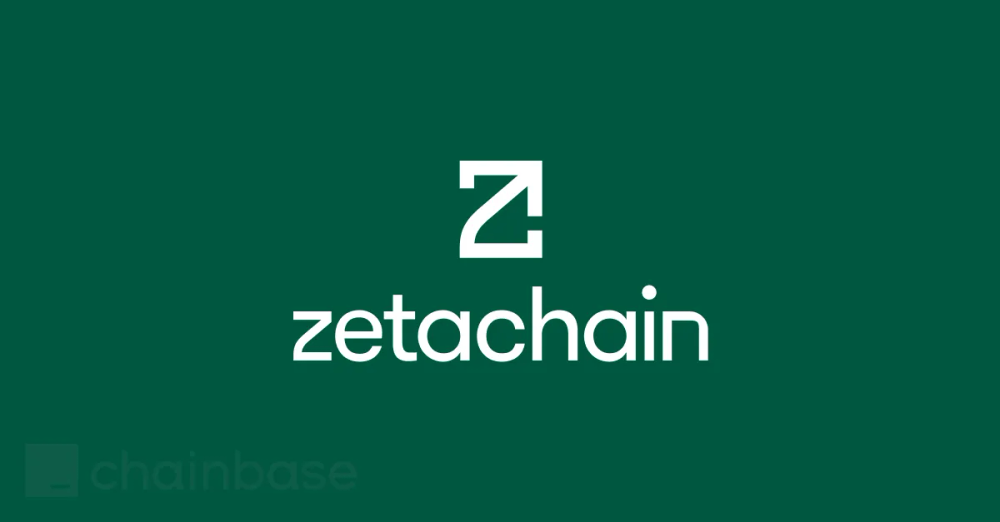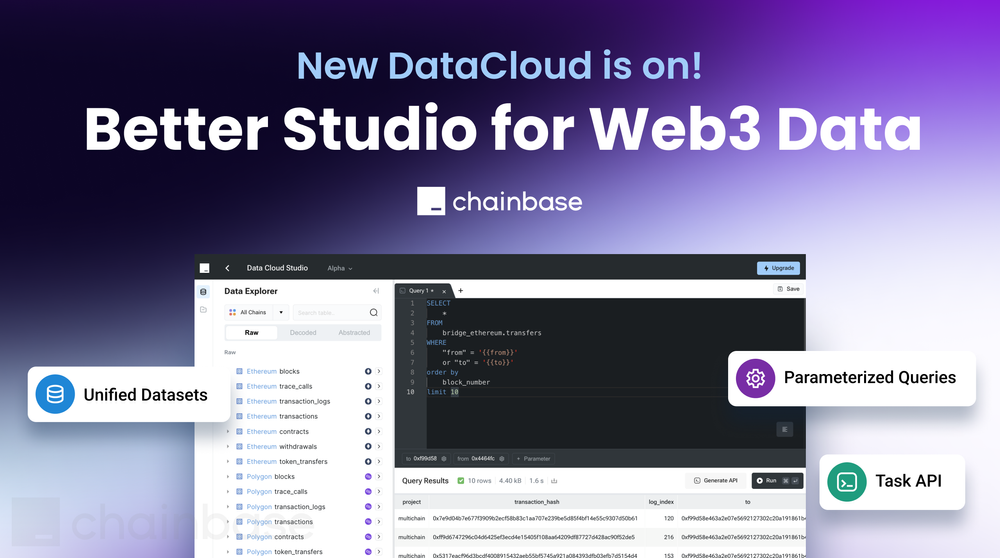Asia's imprint on the global economy and innovation stage can't be ignored - from cars to phones, chips to manufacturing. In the internet's evolution, the West owned Web1 while China clearly defined the mobile-focused Web2 era. After over a decade's growth, Web3 seems to have hit an East vs West inflection point. Crypto has been global since day one, so we need a worldwide lens here. Where we stand is crystal clear: the Eastern side. The real question - what's the East's role in the next crypto cycles? And how should we position ourselves in it? With that thinking, Chainbase has been immersed in crypto events and developer gatherings across Hong Kong, Vietnam, Japan, Hangzhou, Shanghai, Montenegro, Stanford, and beyond these past months. Our positioning is coming into focus, as well as role of the East.
The Overall Industry From A Developer’s Perspective
The Collapse of SVB and Regulation of the US—The crypto world’s 2 key thresholds i H1/2023. While Silicon Valley Bank may not seem directly tied to crypto, it’s necessary to recognize that a huge influx of fiat and crypto startup funding flowed through SVBs. To choke off risk contagion, regulators rolled out “Operation Chokepoint 2.0”—shutting down another 2 crypto-friendly linchpins, Silvergate Bank and Signature Bank. These banks served major CEXs, lending platforms, and other key institutions. As major clients like FTX and Genesis successively collapsed, these banks ultimately fell victim to bank runs amid the contagion. More importantly, this downfall could be the first domino signaling an erosion of trust in the traditional banking system. In the short term, it may greatly affect liquidity in crypto; but in the long run, it could spur broader adoption of decentralized, trustless networks across the market. Starting in Q2, US regulators began directly targeting high-profile figures and CEXs, from Justin Sun to CZ, from Binance to Coinbase. None were spared. The Economic Report of the President dismissed the value proposition of crypto. Specifically, it warned that the growing crypto sector may introduce destabilizing risks into America’s financial system. This anti-crypto movement leaves opportunities to the East. As the CEO of Coinbase, Brian Armstrong, said ”regulatory uncertainty and anti-crypto sentiment are beginning to jeopardize the US’s position as a center of crypto development”. Although it’s still the home to many crypto users, talented developers and projects might reconsider their business focus and resource allocation by region. This could significantly impact the overall industry landscape and shift market dominance from west to east. Which is already happening.

Numbers speak louder than words. By the end of 2022, there were 425Mn crypto owners globally (up from 295Mn in 2021). Asia accounted for a commanding 260Mn(60%), with North America at 54Mn, Africa 30Mn, and Europe 31Mn. The saying” the sun rises in the East” rings true here. Each market within Asia has its own distinctive strengths and is fueling growth through targeted policies. In addition to the macro data, Asian countries have also revealed tremendous opportunities at the micro level. Based on “Map of crypto adoption in 2022”(Souce: Chainalysis, https://blog.chainalysis.com/reports/2022-global-crypto-adoption-index/ ), 9 out of 20 countries in the 2022 crypto adoption index are from Asia, calculated by the activity of retail individuals. More interesting, Vietnam is at the top of this list and the adoption list is dominated by lower-middle-income countries, including 5 southeast’s. The US and UK are the only representatives of high-income countries. All those numbers, adoption rate, # of users, and activities, tell that the Asian market would become the center of the world’s crypto industry.

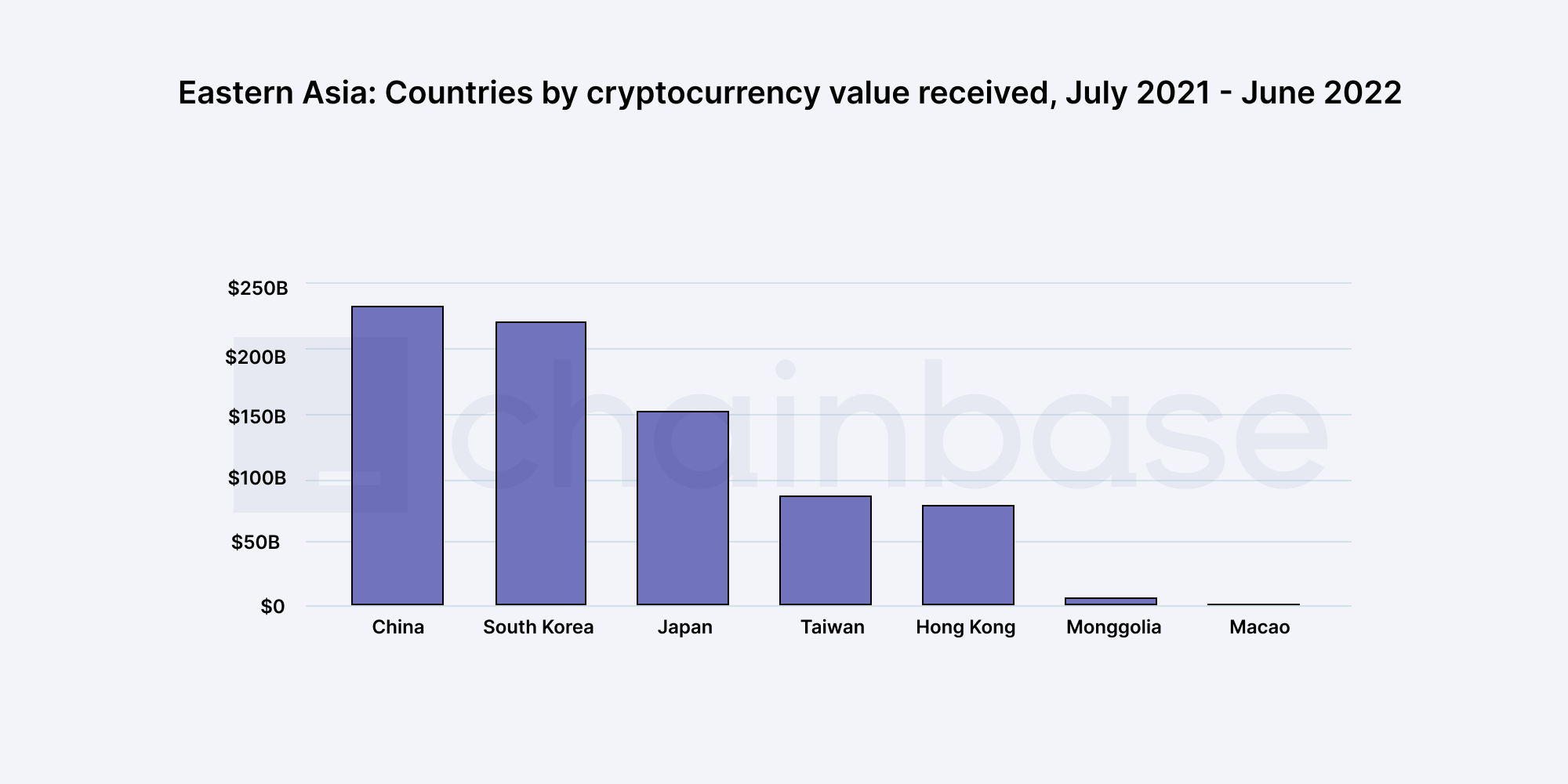
In fact, Asia has already dominated the global crypto market since the last cycle if you stand on the point of CEX transactions and ownership, and the mining industry. Of the top 5 CEXs, 3 are from China. In terms of 24-hour trading volume, the top 3 are all Asian. Crypto transaction volume in East Asia stands at over US $750Bn, led by China, Korea, and Japan. In addition to the leading on the trading side, each Asian market has carved out unique niches. Thanks to crypto stars like Do Kwon, Korea accounts for the most CEX activity around East Asia and many accounts are actively trading. Meanwhile, Japan’s thriving IP culture has cultivated an engaged community of NFT and gaming enthusiasts, which drives intense activities on DeFi in the East Asia region. More importantly, expensive property rate, high unemployment rate, and long-lasting stagflation have led the young generation to choose crypto as an alternative investment asset. All the above shows that Korea and Japan have a strong retail crypto-adopter and investor base. Another dominant force that cannot be ignored is China. Although crypto is banned by policy, China leads globally in metrics like trading volume, # of wallet addresses, and end users. Coupled with HK’s open attitude, this will further amplify China’s influence in the sphere. Hong Kong does take a proactive stance on crypto oversight, particularly on loose regulation and stablecoin issuance.
Shifting focus to South Asia and Southeast. India, with the largest population and second largest developer talent pool, is a critical crypto market. Coupled with the lack of regulatory oversight, this has opened up significant room for rapid crypto growth. Whether in regulatory arbitrage or innovation, there is huge potential. In Southeast Asia, Singapore stands out as a major player aiming to become a crypto hub. In recent years, the government has actively courted projects and executives to relocate headquarters there. However, the results have been underwhelming - while trading volumes and capital flows have increased, Singapore has yet to see tangible innovation or adoption benefits. Meanwhile, retail investors and institutions were hit hard by the Terra and FTX fallouts. Yet elsewhere in the region, the crypto outlook shines bright. In the 2022 global crypto index rankings (source: Chainalysis), Vietnam, the Philippines, and India claimed 3 of the top 5 spots overall. Vietnam and India also led multiple sub-categories. This is not a coincidence. Many reports show that the main Southeast Asian counties plus India dominate various crypto data. Southeast Asia’s unique conditions make it fertile ground for crypto adoption. Political fragmentation, younger population, volatile currencies, and trade unification create an ideal environment for the industry to flourish. Moreover, the single income structure gives the masses the motivation to “work-to-earn” and “play-to-earn”, which taps into the region’s deep pool of engaged users eager to play for profit. In addition, governments also hope crypto to resolve some dilemmas in the development of the traditional finance field. Looking at South America and Africa, crypto has already been recognized as valid user cases for cross-border payments and value storage in developing countries. We believe Southeast Asia will follow a similar path. That’s why governments in Indonesia, Vietnam, and Thailand take the crypto industry seriously and have clear regulations. It leaves healthy development space for GameFi and other dApps, as well as CEXs with official licenses; and a prominent educational environment for retail investors.
Asia's rising prominence in crypto is also reflected in its robust practitioner base and potential increasing on penetration rate.
Asian Developers’ Landscape
As a rising force in Web2, Chinese devs will certainly play a decisive role in future tech revolutions, especially in the crypto era. Per estimates from multiple Chinese Web3 dev communities, the accumulated Web3 devs number reaches 300K-400K nowadays. Meanwhile, the total number of Chinese devs on Github has already surpassed 8Mn, most boasting over 2 years of experience and fluency in languages like Java and Python. All the above shows that Web3 developers’ penetration rate remains low in China. It is believed that the level is similar in other Asian countries as well.
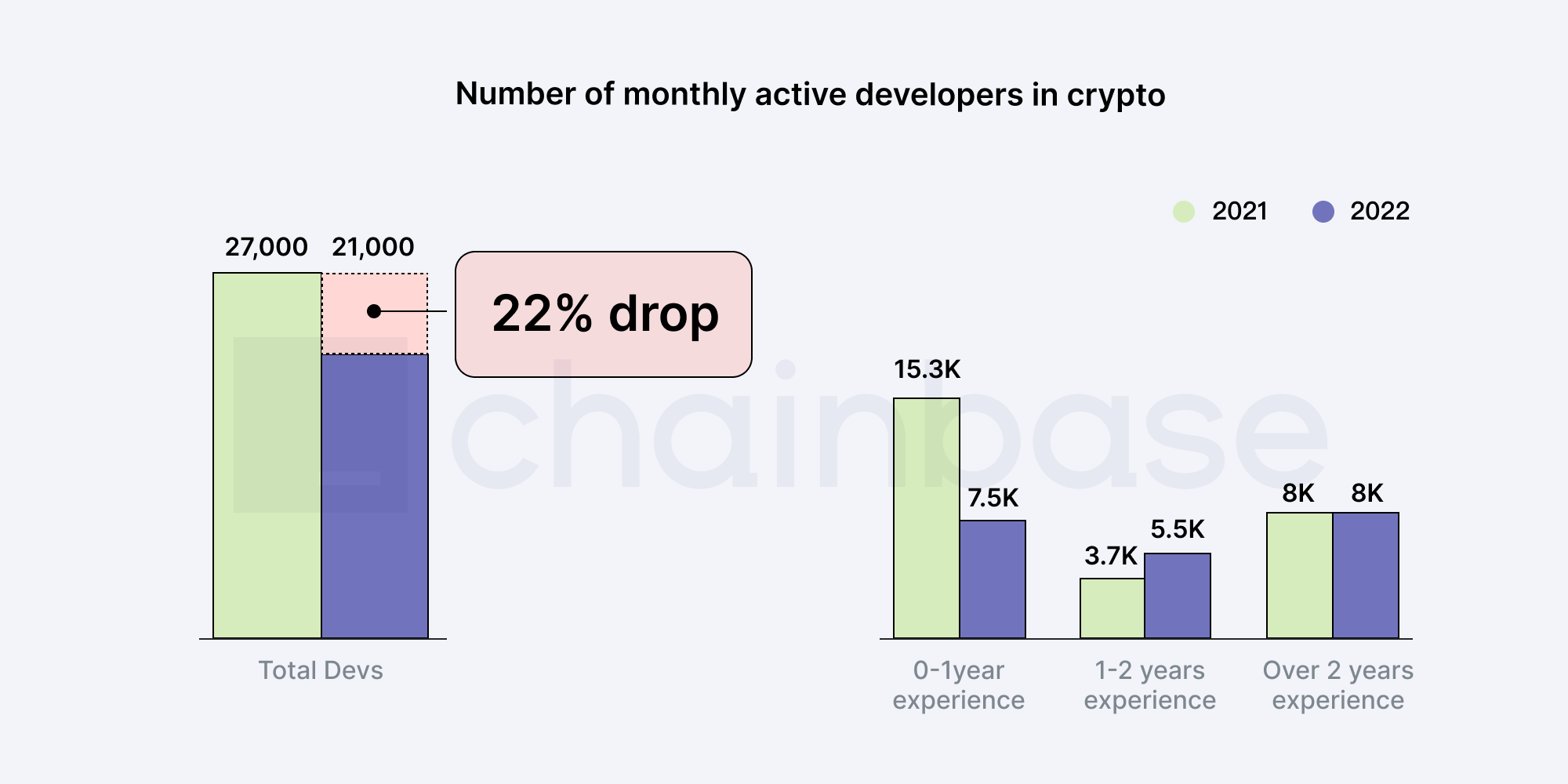
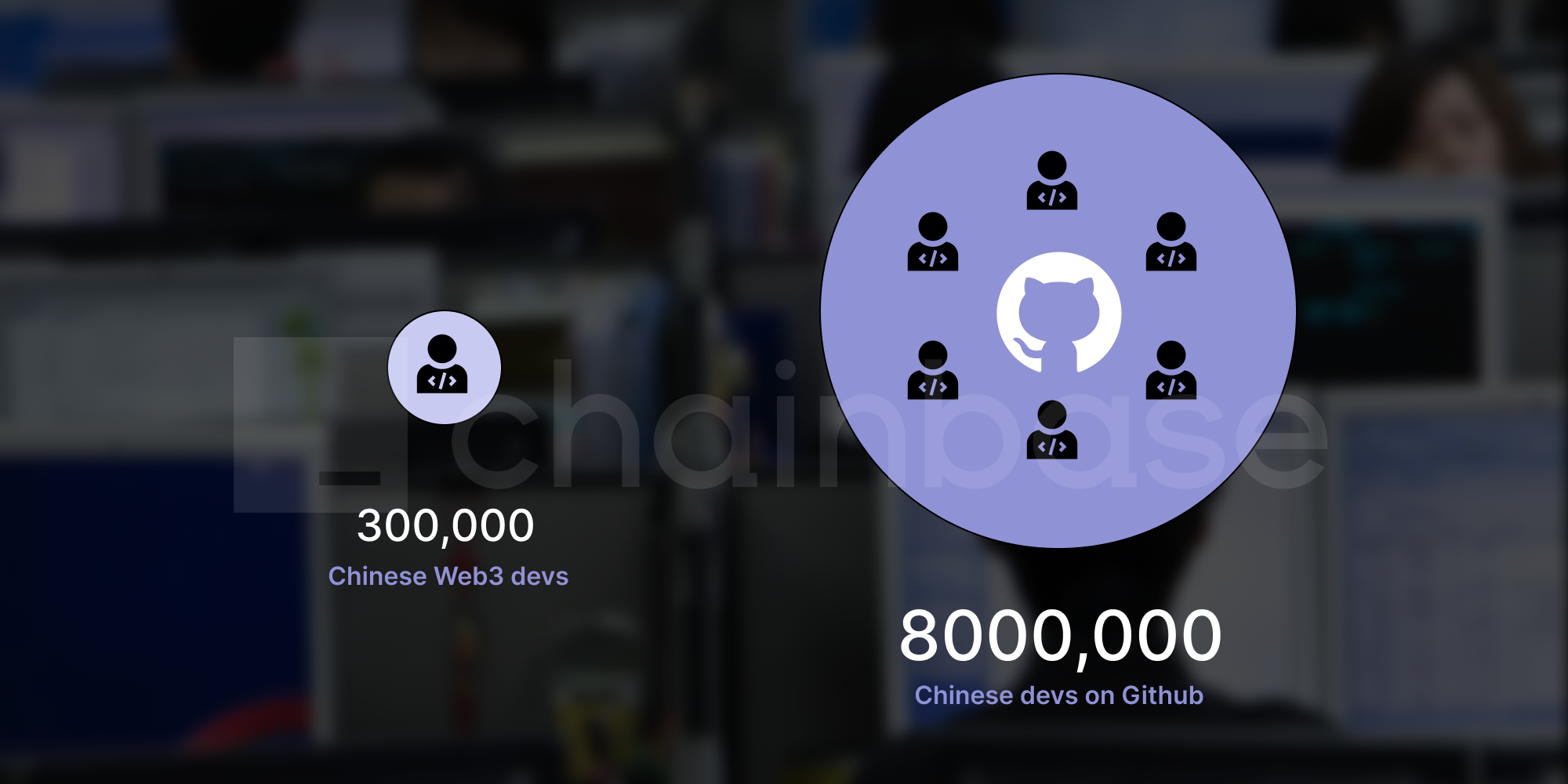
Compare the above numbers with the overall developer base of the entire industry. As of July 2023, approximately 40% of the global 190,000 crypto practitioners were located in Asia, with India and China holding the top two spots. However, when analyzing the professional profiles of these 190,000 practitioners, you would notice that approximately 60% are employed in CEXs and crypto financial services, whereas the number of hands-on developers is constrained. The downward path in active developers is also revealing. Over the past year, the number of monthly active developers has fallen from 27,000 to 21,000 -- a concerning 22% drop. At the same time, a clear bifurcation will reveal if you take a closer look at the profile of developer communities. Those who entered crypto post June 2022 have hemorrhaged, with 48% attrition. However, devs with 1-2 years experience grew from 3.7K to 5.5K, while veterans of over 2 years remained steady at 8K. This is the foundation of crypto devs worldwide. This leaves us with a simple arithmetic problem: if an additional 1% of Chinese and Indian developers enter web3, the overall base will double, which will lead to an immense increase in project supply and on-chain data request volume supply.

Since Asia has such a large market and abundant developer talents, how to better understand them and unlock their full potential should be a top priority for the industry. As a Web3 data infrastructure platform built for developers, Chainbase has spent the last 4 months conducting extensive outreach across Hong Kong, Southeast Asia, Japan, and mainland China. We've also connected with top-tier Chinese developers in Silicon Valley. Throughout the whole journey, our goal has stayed the same. First, to address the actual pain points of developers while building crypto projects. Second, to leverage developer communities of each region and attract more talented builders to push the industry forward. By solving current developers' needs while expanding the funnel, we will nurture a more thriving ecosystem.
Insights From Events And Hands-On Developers
Reflecting on the events we've attended across Asia, from Hong Kong onward, some clear insights emerge:
1️⃣ Firstly, developers in each region have distinct traits and needs.
In Hong Kong and Singapore, we see more fintech, RWA, and trading talents. Southeast Asia trends toward payments optimization and the gaming industry. Japan leans into content-focused verticals. Mainland China is universally strong, with adept platform builders, infra engineers, and dApp developers. The key is recognizing the variability across Asia and tailoring the outreach appropriately. One size does not fit all. We have to understand each community on its own terms. However, interestingly, there’s one common trait: instead of finding devs on social media and IRL events, most of them tend to stay at home and search online, and not speak in public that much. I have the confidence to say, 90% of them prefer to get help through community discussions, online tutorials, and self-research.
2️⃣ Secondly, Asian developers tend to be very pragmatic - focused on solving real-world problems rather than getting caught up in narratives and hype.
This speaks to a shared practicality among Asian developers. And it makes sense, given their exceptional engineering skills and ability to build functional codes. They're doers more than talkers. While Western projects often lean on marketing and big visions, Asian developers keep their heads down and deliver working products. There's a quiet humility there that we need to appreciate. This means that if you want to gain their endorsement, help solve their actual problems and improve their workflow, instead of resorting to empty rhetoric.
3️⃣ Thirdly, there is an incredibly strong work ethic and commitment to getting things done.
Asian developers have a powerful can-do spirit. It's not uncommon for them to put in over 70 hours into work per week and deal with 3 projects simultaneously. There's a willingness to go extra mile. At the same time, they offer high-quality skills at very reasonable costs. It's an unbeatable combination of drive, ability, and value that makes Asian technical talents truly unique.
We've also had the chance to connect deeply with over 100 developers across Asia - sitting down for one-on-one conversations. This has given us exposure to the full spectrum - from seasoned veterans who have weathered multiple crypto cycles, to enthusiastic newbies just entering web3. We've met talented engineers making the jump from web2 to web3, as well as those who are native to this space. These candid exchanges have proven invaluable for understanding the diverse needs and perspectives across Asia's developer communities. By listening directly to individual voices, we gain insights that guide our outreach and strengthen our bonds in each market. I’d love to share some representative insights from builders we met that hopefully will inspire everyone.
1️⃣ Gaming PM@HK: 1.7Bn players, US $72Bn annual revenue, MMPRPG+Casual Games
Asia is the largest gaming market with 1.7Bn players, making up 55% of the world’s total, but also generating US $72Bn revenue annually. More importantly, it also brims with growth potential. And there are clear genres that are suitable for Web3: MMORPG (value of ownership) and Casual Games (light enough to run). Besides the above, as a PM in Web3 Gaming, we must identify gaming genres native to Web3, for example, fully on-chain games. This would not just put gaming assets on-chain, but gaming logic and governance on-chain as well. By leveraging the innate strengths of web3 networks, we can unlock major advances in on-chain data richness and scalability.
2️⃣ Defi PM@HK: Bullish on HK, RWA, and DeFi
As Asia’s financial center, HK is uniquely positioned with deep talent in financial product development and distribution channels. To create compelling DeFi products, we need to seamlessly blend native crypto innovations with proven real-world product logic. The goal is to truly bring blockchain to the masses by solving the real world’s unmet needs.
3️⃣ Local Layer1 CTO@HCMC: Can-Do Culture + Plenty Affordable developers
Vietnam has the strongest dev community in SEA, for a couple of key reasons: a) devs exhibit an unparalleled "can-do" attitude, relentlessly tackling challenges and building innovative solutions. They bring a scrappy, entrepreneurial spirit to development; b) the dev community remains tight-knit and developer-centric. People stick together and know each other well, making it easy to build consensus and collaborate; c) devs are affordable here, with 2-year experience costing US $15-20K annually. Plus sufficient abilities in English reading and writing.
4️⃣ Web2.5 Platform CPO@HCMC: Globalization + Regulatory Arbitrage Opportunities
With its large diaspora in Europe, Vietnam is uniquely positioned to build a globalized team. At the same time, Vietnam faces ingrained challenges in traditional finance ripe for innovation - from cross-border transactions to financial inclusion. A global team with strong Vietnamese representation and local funding sources can optimize this advantage, as this can be a strength for many third-world background projects to build in their homeland.
5️⃣ Leading Infra Project@Shanghai: Developer Hub with Well-Trained and Rich Experience
There is no question that Chinese tech giants, like Alibaba, Tencent, and Huawei, have trained legions of internet, cloud and infra devs. Having handled peak transaction volumes of 2Mn/s during Spring Festival Gala and Single’s Day Shopping Festival. Their goal from day one is to build high-concurrency, high-availability, and high-security operation systems. This taps directly into the crypto trilemma - the challenge of balancing decentralization, security, and scalability. Any project that manages to assemble a strong Chinese engineering team is at a major advantage in tackling development problems.
6️⃣ Web2 Gaming Studio@Shanghai: Oversupply of Gaming Talent under US $20Bn Market
With decades of experience across PC, web, mobile, and esports gaming, Shanghai has cultivated an unparalleled gaming ecosystem. Game development has birthed countless unicorns like 37Games, Shanda, Giant Network, MiHoYo, Lilith Games, and Bilibili. In 2022, China's gaming revenue exceeded US $20Bn, cementing its status as a global leader in game creation, publishing, and marketing. Looking ahead, Shanghai is poised to pioneer the web2-to-web3 gaming transition. A wave of blockchain game launches, along with sustained hackathons, will drive web3 innovation and supply.
7️⃣ Layer1 Tech Advisor@Hangzhou: Work in Public and Go Global
Chinese devs tend to excel at hands-on work, yet often lag in proactive communication with overseas teams and grasping PMF. Building technical bridges is thus critical. Most public chains lack sustained dev support, an area where Chinese talent could provide immense value. However, Chinese devs must communicate with public chains in their preferred terminology to obtain resources and funding. Bridging this communication gap represents the biggest opportunity for Chinese devs to engage globally.
8️⃣ Dev Community@Hangzhou: Onboarding Developers from Internet Giants
The most direct reason to build a developer community in Hangzhou is the presence of hundreds of thousands of seasoned Internet-era developers. With high education, a thirst for learning, strong technical skills, and abundant experience, they grasp both technology and finance, even boasting an international perspective and willingness. From a web3 standpoint, Hangzhou is also home to pioneers in cloud mining, infra, and security projects. Hangzhou and Shenzhen should be the frontlines of China's web3 evolution.
9️⃣ ZK Eng@Osaka: Limited Supply of Devs and Engs + Agent Culture
As a Chinese engineer in Japan, I've witnessed the country's enduring cultural fabric alongside a newfound embrace of openness. With limited domestic engineers due to missing the internet boom, yet the public is highly literate in finance, gaming, and more - a boon for user acquisition in key verticals. Moreover, Japan's longstanding "agent" and resale cultures mean that local partners are essential for market expansion, serving as optimal conduits for trust. Additionally, the prevailing open mindset actively welcomes overseas projects and talent, sparking a virtuous cycle
🔟 Web3 Labs of Major Japanese Corporation@Osaka: 100 Tn Yen Stimulation + Digital Yen
The wave of support for the blockchain industry from the Japanese government is unprecedented, with 100 trillion yen in economic stimulus, of which crypto is a key area. The Prime Minister announced the creation of a Digital Agency to drive digital transformation, with crypto as a top priority. Japan's Liberal Democratic Party released a Web3 whitepaper outlining tax reforms, clarifying regulations across sectors, and reducing oversight across the board. All major Japanese corporations are actively investing in Web3 and establishing Web3 divisions.
Developers vs. Core Ecosystems
Complementing developers, public chains represent another vital ecosystem role. As an infra provider to over a dozen chains, Chainbase maintains frequent dialogues and multifaceted partnerships with them. In general, foundations of public chains commonly encounter the following challenges:
- Before engaging end users, how can they attract seasoned developers and high-caliber projects first?
- With many existing devs shuttling between different chains, how to onboard more newcomers?
- While highly valuing Asian, especially Chinese-speaking devs, how to reach them effectively?
Faced with these challenges, when advocating for Asian developers, our ace cards are:
- Millions of Asian developers remain outside of web3. They require superior educational products.
- Foundations can adopt a more hands-on mentoring approach, serving as early guides to smoothly onboard devs. The key is to proactively reach out to developers where they are (online or IRL or both).
- BD and tech ambassadors alone are insufficient. Foundations should collaborate with established projects in the local market to fertilize the soil for nascent developer growth.
Reflecting on this, I'm reminded of Chainbase's mission and values. As a web3 data infrastructure, we aim to make on-chain data open, usable, and accessible, and provide a developer-friendly experience for web2 and web3 alike. To us, web3 represents a data revolution - data sovereignty and open data platforms - with devs as data producers and consumers! We hope:
To demystify on-chain data, delivering structured data services for developers.
To build a data platform seamlessly integrating on-chain data into real development workflows, boosting efficiency.
To nurture the web3 dev ecosystem via community meetups, knowledge sharing, and developer enablement.
Developer community Roadmap for the next 12 months
Standing on the position of data infra platform, Chainbase aims to remove the friction developers encounter, freeing them and helping them focus on creation. With the right tools and support, Asia's abundant developer talent can build the next generation of world-class crypto applications. We strive to provide that foundation. By empowering builders across Asia, Chainbase has made great progress with specific achievements benefiting developers. With a 12-month roadmap to grow with devs and communities, Chainbase sincerely invites developers to participate in our roadmap. We are building for you and hope to build with you:
✅ Progress and Achievements
- Processed 300+ high-volume datasets and made them directly usable
- Real-time data feedback, achieved by resolving data latency issues stemming from blockchain reorgs
- Full historical raw data, abstract data, and smart contract data, that can achieve data syncing
- Web3 APIs, supporting all data from major EVM Chains, with sub-second response times**
- Webhook functionality, enabling real-time data subscriptions and data push notifications, scaling for commercial deployment
- Provided a 99.99% availability subgraph hosting service with indexing speeds over 2 times faster than the industry average
- And more
🎯 12-Month Roadmap for Devs and Communities
- Taking a broader perspective on our platform, building into a hub for Asian Devs;
- Three unswerving value propositions: openness, fast and reliable;
- Be more proactive and bold in sharing what we have, either standardized datasets or resources from partners;
- Hosting vertical hackathons and workshop series to maximally reward developers for their building achievements
We envision an open, collaborative web3 where data flows freely across blockchains, dApps, developers, and users. Join the journey with us and drive the web3 data revolution together!
About Chainbase
Chainbase is an all-in-one data infrastructure for Web3 that allows you to index, transform, and use on-chain data at scale. By leveraging enriched on-chain data and streaming computing technologies across one data infrastructure, Chainbase automates the indexing and querying of blockchain data, enabling developers to accomplish more with less effort.
Want to learn more about Chainbase?
Visit our website chainbase.com Sign up for a free account, and Check out our documentation.
Website|Blog|Twitter|Discord|Link3
